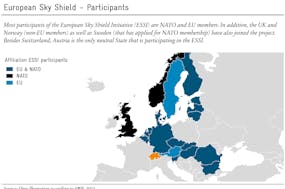Promoting business location sounds good to many. However, what the Confederation means by this may be surprising to some. After all, the primary focus is not on improving framework conditions to increase Switzerland’s competitiveness. Instead, a large proportion of the funding goes towards tourism and regional development. Parliament has allocated a total of CHF 429 million for the years 2024–27 – a 15 percent increase compared to the subsidies in the previous legislature period. The question arises, and not only in view of the imbalance in federal finances: does this funding make sense?
Benefits at the public’s expense
There are doubts about the efficiency and effectiveness of the subsidies in the federal tourism policy, which currently amount to CHF 110 million p.a.1In addition, the (para-)hotel industry has benefited from a reduced VAT rate of 3.7 percent since 1996. The Federal Council estimates this benefit at around CHF 180 million per year. Subsidies for the marketing organization Switzerland Tourism are particularly questionable. The organization was originally founded to support the tourism industry, which had suffered in the wake of the First World War, the same went for the competition from Austria and France. This “initial funding” has become a recurring task. To this day, the Confederation provides the majority of Switzerland Tourism’s budget with a current annual contribution of CHF 58 million.2In comparison: In Germany, the federal contribution to the state marketing organization amounts to EUR 40.5 million, in Austria to EUR 30 million.

Where no government action is needed. (Ernie Ernst, Avenir Suisse, with AI)
Certainly, if someone advertises for Switzerland’s tourism destinations, others who are not part of the campaign benefit as well. In other words, they become free riders. However, promoting Switzerland is at best an industry-wide public good. If the industry association successfully promotes Switzerland as a travel destination through a campaign abroad, players in the tourism sector will benefit from it. It is therefore inappropriate to finance such campaigns from general state funds – especially as certain much-advertised hotspots are now complaining about “mass tourism”. If general advertising is supposed to be run, the industry should manage it alone through its own associations.
Considerable deadweight effects
Considerable amounts of money are spent on two other pillars of our country’s promotion: Innotour and the New Regional Policy (NRP). The former was originally designed as a five-year innovation program and was intended to help overcome the tourism crisis in the late 1990s. Although this crisis of adjustment has long since passed, the federal government still invests CHF 11 million per year in promoting innovation in tourism. As part of the NRP, the federal government particularly promotes projects in mountain regions, the wider rural area and in border regions. These projects are financed by the Regional Development Fund. At CHF 1.1 billion at the end of 2023, the fund was so generously endowed that the question must be raised as to whether the accumulation of the fund should not have been stopped long ago. After all, this would save the federal government CHF 30 million per year.
The fund reserves grants and loans of around CHF 50 million each year for NRP projects. These subsidies are often claimed to have a major leverage effect. It is said that every NRP franc invested by the federal government mobilizes around four additional francs for regional economic development. As the co-financing of projects is often a requirement, it is difficult to determine with certainty whether the NRP funds are being used efficiently and effectively.
More important for evaluating whether the subsidies are accompanied by economically harmful effects are deadweight effects: Would private projects being financed have been implemented regardless of public funding? The Swiss Federal Audit Office (SFAO) did not grade tourism promotion well on this issue in an investigation in 2022. According to the SFAO, around 40 percent of the mountain railroad and hotel projects funded under the NRP would have been implemented without state subsidies. In the past, two out of five tax francs went straight into the pockets of private individuals without the funding triggering additional projects.
Allowing for structural change
In the case of tourism, subsidies are often justified by pointing to the importance of the industry for local wealth generation and jobs. However, it is hardly ever asked what would happen if the subsidies were removed.
Companies in the tourism industry might have to increase their prices slightly or adjust their strategy in order to recoup the additional marketing costs or infrastructure expenditure. Entrepreneurs who are already struggling to make ends meet may have to look for other activities. They will then create added value in the new field. Politicians should not stop this structural change in the regions – just as they should not support steel companies or glass producers that have run into difficulties.
As with many other funding areas, economic promotion suffers from the growing number of funding instruments that have been introduced over the years and the repeated extension of various temporary measures. Whether the subsidies granted prove effective in the long run and how high the deadweight loss is is analyzed far too rarely. If economic promotion was primarily limited to promoting the general framework conditions, this would not only benefit the federal budget, but also public interest.
Potential savings in the federal budget: around CHF 100 million per year.
Regional development: up to CHF 30 million annually
Tourism: up to CHF 70 million annually





